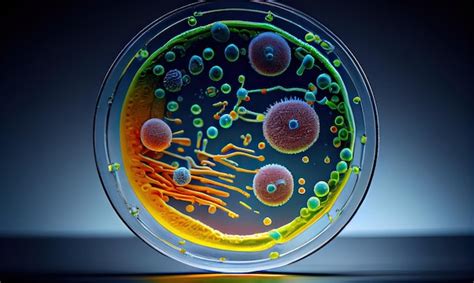Bacteria, those tiny organisms that can wreak havoc on our health, have been evolving and adapting, becoming more resilient to antibiotics. This resistance poses a significant threat not only to individuals but also to global public health systems. But fear not, for scientists like Erik Kristiansson are on a mission to unravel the mysteries of bacterial resistance.
Kristiansson, a distinguished Professor at Chalmers University of Technology and the University of Gothenburg in Sweden, has dedicated his career to studying how bacteria develop resistance. According to him, understanding this process is key to developing effective strategies against these resilient germs. In his own words,
“By understanding how resistance in bacteria arises, we can better combat its spread.”
The World Health Organization (WHO) considers antibiotic resistance as one of the most pressing challenges facing modern medicine. When bacteria become resistant to antibiotics, these life-saving drugs lose their effectiveness. This can turn once easily treatable infections like pneumonia or blood poisoning into life-threatening conditions.
It’s not just about treating infections; antibiotic-resistant bacteria also complicate various medical procedures such as organ transplants and cancer treatments. The ease with which bacteria exchange genes – including those responsible for resistance – plays a pivotal role in spreading this menace.
In their quest for answers, researchers from Chalmers University of Technology and the University of Gothenburg embarked on an ambitious study published in Nature Communications. Their collaboration extended to include experts from the Fraunhofer-Chalmers Centre as they delved into the world of bacterial genetics armed with a powerful tool – an AI model.
David Lund, a doctoral student involved in the study, highlights how AI proved invaluable in analyzing vast amounts of data related to historical gene transfers between bacteria. Lund remarks that their approach was unique due to the extensive dataset used for training the AI model – nearly a million bacterial genomes compiled over years by researchers worldwide.
The team’s efforts shed light on environments where genes conferring antibiotic resistance are most likely exchanged among bacteria. Lund points out that settings like human habitats and water treatment plants create hotspots for gene transfer due to frequent encounters between resistant strains amidst antibiotic exposure.
A particularly intriguing finding was how genetic similarity influences gene swapping between bacteria. Lund explains that akin genetic structures facilitate sharing of resistance genes with minimal energy expenditure by recipient bacteria – thereby reducing any potential cost incurred during gene acquisition.
Erik Kristiansson emphasizes that while their model displayed impressive predictive capabilities regarding gene transfers within known cases, there is room for further enhancement through continued refinement and training on broader datasets. The ultimate goal? To deploy advanced AI models in real-time diagnostics systems capable of swiftly identifying risks associated with new forms of multi-resistant bacteria.
Looking ahead optimistically, Kristiansson envisions integrating AI technology into various applications ranging from molecular diagnostics for detecting emerging resistant strains to surveillance mechanisms monitoring environments where antibiotics are prevalent – thus paving the way for proactive measures against antibiotic resistance proliferation.
As we navigate this ever-evolving battle against superbugs armed with science and innovation, one thing remains certain – our collective vigilance and commitment will determine our success in preserving these vital tools of modern medicine.








Leave feedback about this